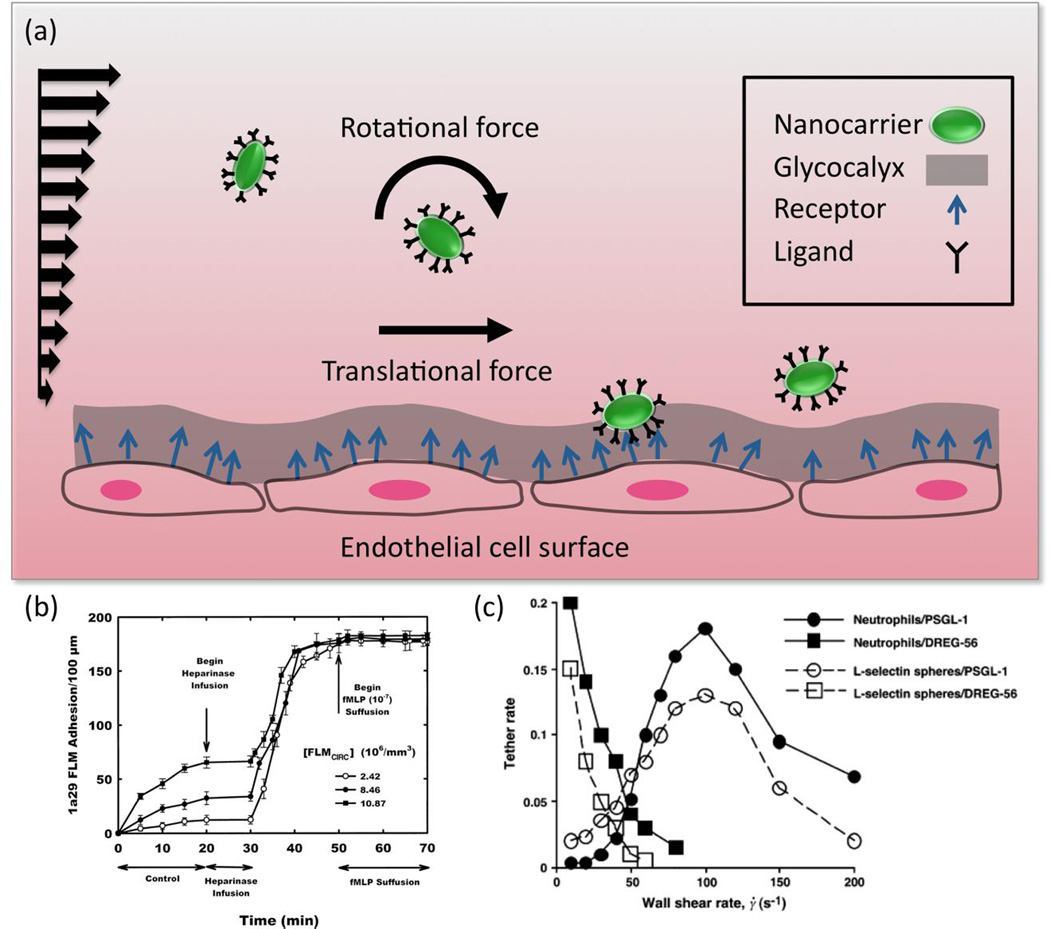Fig. 4.
Depiction of flow-induced nanocarrier translational and rotational (tumbling) motion induced by fluid forces, which will be dependent on nanocarrier size and shape. The wavy, deformable endothelial cell layer surface and presence of the glycocalyx are included as additional factors regulating binding (a). For instance, as determined in [51], shedding of the glycocalyx via heparinase infusion significantly enhances the binding of ICAM-targeted 100nm diameter fluorescent polystyrene spheres (1a29 FLMs) in postcapillary venules (b). As depicted in [167], there is a non-linear relationship between wall shear and binding of 3µm L-selectin targeted polystyrene microspheres to a complementary surface (L-selectin spheres/PSGL-1) (c). A threshold shear rate, implicated in inducing tumbling of the spheres near the binding surface, resulted in optimal binding. (b) Reproduced with permission from [51]. (c) Reprinted from [167] with permission from Elsevier.

